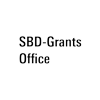The Funding landscape for research and innovation in europe is mainly dominated by the European Commission's framework "Horizon Europe", that runs from 2021-2027.
The primary driver of research and innovation funding in Europe continues to be the European Commission’s flagship programme Horizon Europe, which spans the period 2021 to 2027.
Horizon Europe fosters collaboration across countries, disciplines, and sectors, strengthening the EU’s capacity to generate and apply world-class knowledge and technologies. It plays a critical role in supporting EU policy priorities and addressing global challenges, including climate change, digital transformation, public health, and the transition to a sustainable economy.
Aligned with the UN Sustainable Development Goals (SDGs), Horizon Europe aims to:
- Enhance Europe's scientific and technological excellence;
- Promote industrial competitiveness;
- Stimulate job creation and economic growth;
- Engage the entire EU talent pool more inclusively;
- Maximise the impact of investments within a reinforced European Research Area (ERA).
The programme’s structure is designed to ensure a strategic and mission-oriented approach to innovation, delivering tangible benefits for society, the environment, and the economy.
Horizon Europe research framework
The content of Work Programmes for Horizon Europe is prepared by strategic planning and the resultant Strategic Plan. Funding opportunities under Horizon Europe are set out in Work Programmes. Horizon Europe incorporates research and innovation missions to increase the effectiveness of funding by pursuing clearly defined targets.
Horizon Europe Structure and Funding Focus Across Pillars
Horizon Europe is built around four strategic pillars, each supporting specific aspects of research and innovation across varying Technology Readiness Levels (TRLs) and types of collaboration. In addition, other EU instruments complement Horizon Europe to support downstream innovation and deployment.
General rules and features of Horizon Europe (consortium)
FINDING INFORMATION ON THE CALLS
Comprehensive information on Work Programmes and specific funding calls, including those targeting both individual researchers and collaborative consortia, is available via the EU Funding & Tenders Portal.
Through the National Contact Points (NCP) SBD GO receives regular updates on the upcoming work programme including the calls. This can be accessed through the SBD Grants Office Hub.
Size of the consortium
Consortia must have at least 3 participants from at least 3 member states or associated countries. Legal entities from the EU and associated countries can participate. Details on eligible countries can be found in the Work Programme Call Topics and in this document.
Type of actions (RIA, IA, CSA)
Calls always specify what types of action can be funded. There are three main types of actions:
- Research and Innovation actions (RIA): are typically for lower TRL and involve more ‘basic research’. Projects often last 4-5 years.
- Innovation Actions (IA): these are for projects at higher TRL levels, where products or technologies are almost ready to be demonstrated in the real environment. Innovation Actions typically last 3 years, after which you should have demonstrated it in the real environment.
- Coordination and Support Actions (CSA): these are not for research, but rather to set up networks, create roadmaps, policy documents etc.
TRL
Technology Readiness Levels (TRL) indicate how close a product or technology is to market uptake and actual use. Funding calls typically specify what TRL they require to be reached after the funding period. Most research at universities involves lower TRLs, whereas higher TRLs are often created by private companies, although this is not a strict separation.
Participating in a consortium or coordination a consortium
Participating in a consortium to obtain EU funding for your research and is encouraged by the UT. To find a consortium, it is usually best to use your network. Connect to fellow researchers and start early on (as soon as the Work Program is published). As UT we have a subscription to the platform Crowdhelix which anables researchers to find consortium partners. Funding opportunities can be found on the Funding & Tenders Portal of the EC and in databases such as RESEARCHconnect.
Coordinating a consortium is more prestigious, but it also requires sufficient experience. It involves writing and coordinating a 50-70 page proposal and extensive commitment. Therefore, we advise to coordinate only after you have participated in several consortia. Furthermore, the larger the consortium, the harder it is to manage. If you are considering coordinating a consortium, contact your faculty and the SBD-Grants Office so that we may support you in the best possible way.
What can be funded?
What can be funded typically depends on the call and the type of action. Costs need to be specified in detail. The EC is currently piloting with lumpsum funding. The primary applicant (coordinator) of a project can hire capacity for project management at the SBD Project Management Office for the administrative part of the project. The project manager supports the project lead in all aspects of project management (communication, meetings, workshops, etc.). The associated costs can be included in the project grant.
